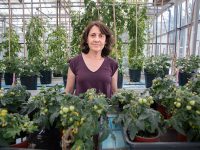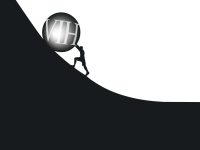
Genetics and linguistics go hand in hand. This should come as no surprise, since genetics studies the transmission of genetic information, and language is the way we transmit information to each other. In order to facilitate understanding of the most relevant concepts, geneticists borrow descriptive terms from the semantic field of linguistics and speak of transcription, translation, and genetic code. But beyond similarities and comparisons between the two systems of transmission of information, we can delve deeper into the relationship between the two apparently distant disciplines. But perhaps they are not so distant.
The ability to communicate through articulate language and complex rules is unique to humans. Evolution and linguistics have debated in many forums the extent to which being human is linked to the ability to generate complex language. Yet it is also believed that what made us human was the development of hand dexterity and the ability to design and use tools as an extension of our bodies. Perhaps to reconcile the two ideas, a paper was recently published which, through functional studies using magnetic resonance imaging, shows that the area of the brain involved in in-hand manipulation shares neurons with the area involved in language comprehension. So perhaps both abilities co-evolved. In addition to needing fine neuromotor control, they also require an understanding of hierarchical and dependent relationships between different elements. In any case, the fact that the ability to learn languages is innate in humans is not in dispute: human infants are able to learn languages, both their own and any other, without difficulty. Therefore, the ability to learn a language – including its syntactic rules, regularities, conjugations, and declensions – is encoded in our DNA. It is also clear that some anatomical adaptations (skull, jaw, palate, and different muscles and phonatory organs) are necessary to be able to emit sounds accurately, and these are also encoded in our DNA.
«Geneticists borrow descriptive terms from linguistics and speak of transcription, translation, and genetic code»
But the key to irrefutably linking genetics and language was provided by the study of a British family spanning more than three generations, in which fifteen of its members had verbal dyspraxia, a severe impairment of pronunciation and comprehension of both spoken and written language. Geneticists observed that this disability was inherited in an autosomal dominant Mendelian inheritance pattern and, using genetic analysis approaches, identified that all members of the affected family shared a mutation in the FOXP2 gene, thus reliably linking genetics and language for the first time. The mutation changed a highly conserved amino acid in the encoded protein and rendered it inactive. Because we receive two copies (two alleles) of autosomal genes, one from the father and one from the mother, the result was that the amount of protein produced by one allele alone was not enough to perform its neuronal function correctly. FOXP2 codes for a transcription factor, a hierarchical «master» gene that regulates many other genes relevant to neural development in the area of the brain that controls language. The FOXP2 gene has two unique changes, present only in humans, that have been found to be critical for the ability to develop complex language. FOXP2 is not the only gene involved in language, it was just the first to be discovered. Some other day I will talk about the genetic variant in the ASPM gene associated with the predisposition to easily understand tonal languages (like Chinese), which is very common in Asian populations, or why humans innately learn the rules of each language and then regularise based on it. Genetics and language? Hand in hand.





